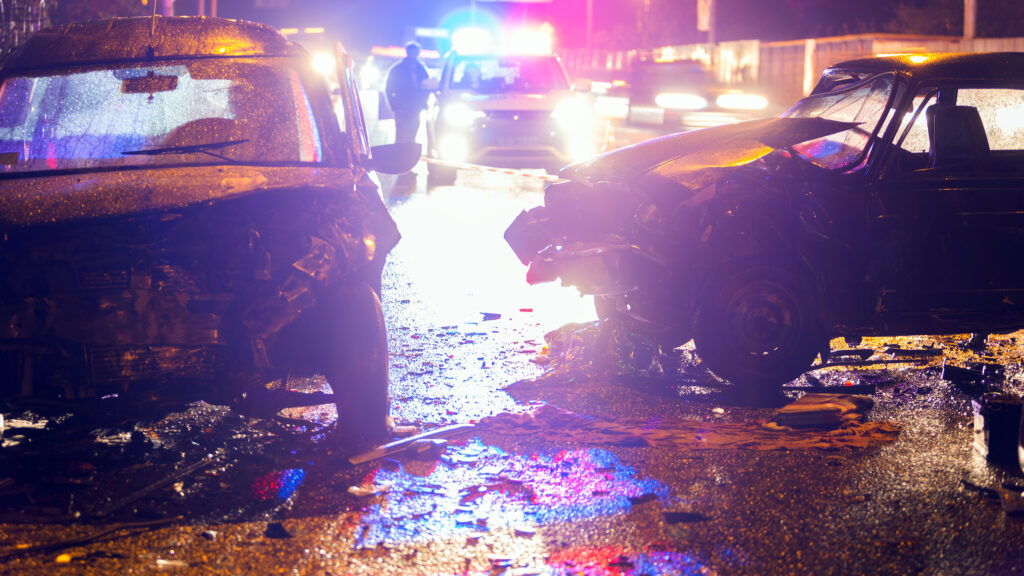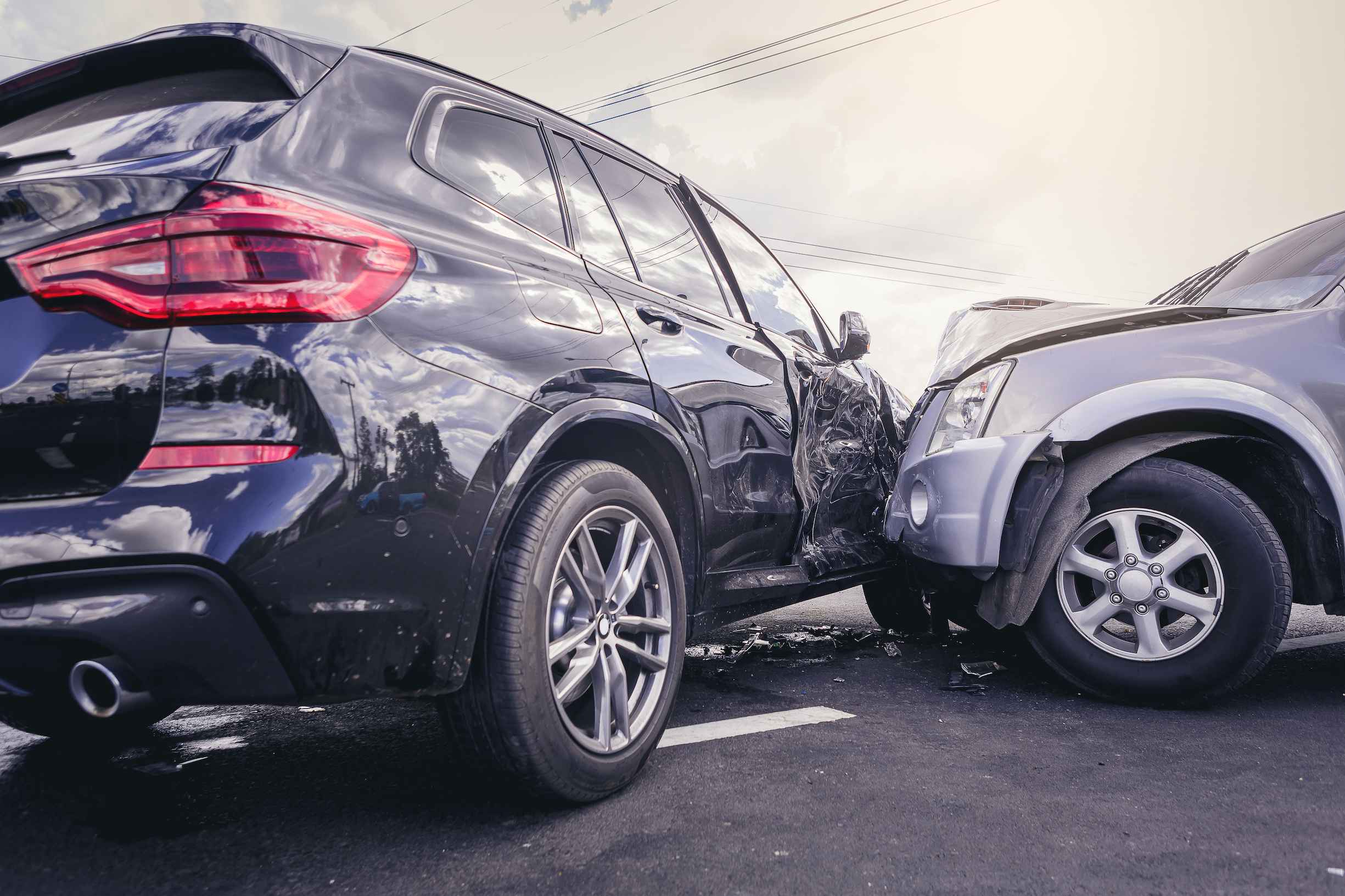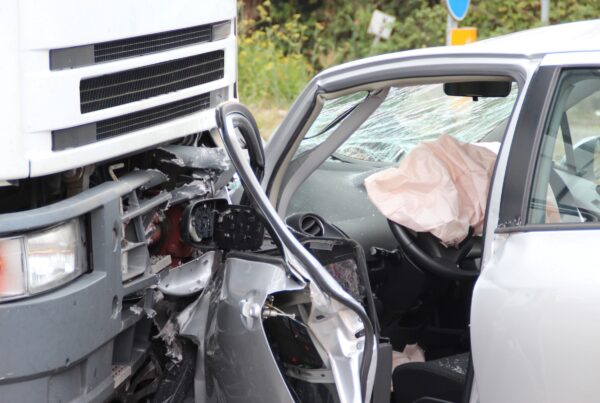Understanding how fault is determined in an accident becomes crucial for those involved. Navigating the legal landscape and insurance implications requires a comprehensive understanding of this process because, if done incorrectly or incompletely, could mean not receiving full compensation or paying more. In this blog, we’ll explore the legal principles, factors considered in fault determination, and what to do if you are not at fault for a car accident.
The Legal Framework of Fault Determination
The legal principles used to determine fault are similar across the United States – it’s answering the question, “Who’s actions, or inactions, caused the wreck?” However, specific considerations will vary by state when it comes to compensation.
Missouri is considered a comparative fault state. In a “pure” comparative fault state, the plaintiff’s fault percentage will reduce their compensation reward. The injured party may still receive injury compensation even if they were more than 50 percent at fault for the accident.
Some states, like Kansas and Illinois, have modified comparative negligence laws in place, meaning the amount of fault a plaintiff can hold is capped. If the plaintiff is over 50 percent at fault, they cannot collect damages, but if they are below that percentage, their compensation is reduced by the fault percentage. For example, if they were found to be 49 percent at fault, they are able to collect 51 percent of the damages.
Other states, like Alabama, Maryland, North Carolina, and Virginia, are contributory negligence states. This all-or-nothing approach means that plaintiffs who are found to be at any fault cannot collect damages from the other party involved.
Factors Considered in Determining Fault
Various factors play a role in determining fault after an accident. In most cases, insurance companies determine who is at fault by reviewing the state laws where the accident occurred and the facts surrounding the accident. Fault can be assigned to the most negligent party, but in many cases, all parties share at least some responsibility for an accident. Identifying who was at fault takes more than looking at vehicle damage, as other factors, like weather conditions, can also contribute to the accident.
Below are some ways fault is determined according to the law and insurance companies.
Accident Scene Investigation
One critical factor is the investigation conducted at the accident scene. The insurance company will carefully evaluate the accident location, time of day the accident occurred, weather conditions at the time of the accident, and more. Some important factors they’ll look for at the accident scene are whether the area is known to be dangerous or if there is construction in the area. They will also take into consideration if there was inclement weather or another accident causing traffic issues that may have contributed to the accident.
Your insurance company will carefully evaluate the accident location, the time of day and other factors. For example, certain areas are known to be dangerous, or inclement weather could have been a factor, or construction or another accident may have played a role in your incident.
Collected Evidence and Documentation from Police Officers and Parties Involved
Police officers play a crucial role in collecting evidence and documenting the scene, including details about the drivers involved and other parties. The evidence and documentation gathered at the scene form a basis for determining responsibility. If you gathered evidence on your own, this can be used by the insurance company to help determine fault. They may also reach out to the other party’s insurance company to collect their evidence.
All of these pieces together help retell the story of what happened with tangible evidence rather than simply relying on the honesty of individuals.
Driver Statements
Statements made by the drivers are significant in the fault determination process. These statements can provide insights into the sequence of events and help establish liability and can be gathered by the responding police officers or car insurance companies. That said, it’s important to be careful about what is admitted in these statements, whether purposefully or not, that could have you taking the blame.
In the heat of the moment, drivers will end up pointing fingers at one another and, without thinking, can point it back at themselves. Statements like “I didn’t see the stop sign” will immediately put you in the hot seat. When making a statement, stay calm and stick to the facts. Don’t try to interpret the possible cause or how things occurred.

Not At Fault? Here’s What to Do Next.
If you find yourself not at fault after an accident in Missouri, taking specific steps to file an insurance claim is essential.
- Immediately report the accident to your insurance company. The accident must also be reported to the other driver’s insurance company if you are not at fault.
- Follow the insurance company’s instructions when making a claim. Missing instructions or not following the steps can result in processing delays or lower compensation.
- Report the accident to the police, particularly if you were the victim of a hit-and-run, uninsured motorist, vandalism, or theft.
- Accidents involving an uninsured motorist should be reported to the Missouri Department of Revenue if damages exceed $500 or result in bodily injury or death.
How Does Insurance Work When It’s Not Your Fault?
One of the first questions many insurance companies get is, “Will insurance go up if someone hits me?” It’s a legitimate concern, especially when you’re not at fault – why should you have to pay more for something that wasn’t your fault?
A car insurance deductible is what you have agreed to pay out of pocket when filing an insurance claim. Once that amount is paid, the insurance company handles the remaining costs up to your policy limit. Deductibles are typically required with collision coverage, which is what covers you in the event the accident is not your fault.
Whether you have to pay the deductible or not after you’re found not to be at fault is dependent on how you want to move forward. You can choose to wait until the at-fault driver’s insurance company reaches out to pay your damages, but this is usually a slow process. For a quicker solution, you can file a claim with your insurance and pay your deductible, having insurance cover the remaining costs, and then wait for subrogation or deductible recovery.
Subrogation, or deductible recovery, is the process the insurance company goes through to get your deductible back from the other insurer when you are not at fault. This process begins once fault is established and will most likely require proof that you have paid the deductible, such as with a repair shop invoice or credit card statement.
Who is Responsible for Accident-Related Medical Expenses?
Determining responsibility for medical expenses in accidents deemed not your fault is crucial when an accident involves injuries. Delaying medical treatment is not an option after a car accident, so you won’t be able to wait for the car insurance to get sorted out. Instead, utilize your health insurance to help cover ambulance, emergency room visits, hospitalization, urgent care, or primary care visits.
In addition to your health insurance, most auto insurance plans offer a medical payments coverage option to help pay for the often expensive medical expenses after an accident. If you require treatment from specialized providers, it is possible to receive treatment without paying anything upfront by placing a lien on any recovery. Once the case is resolved, the healthcare provider receives payment from the awarded compensation.
Ultimately, the at-fault party may pay your medical bills if enough insurance coverage is available. Unfortunately, this process can take years to settle or receive a judgment, and medical treatment is something that cannot wait that long, making these other payment options necessary.
Be sure to keep all records of paid medical bills, as they will be required in the subrogation process to ensure you receive full compensation.
The Consequences of Being At-Fault
Being found at fault in an accident has legal implications and potential penalties. If you are at fault and the other person was injured, your liability insurance will offer compensation. Your insurance may have to cover the other party’s medical bills, lost wages or diminished earning capacity, or general damages like pain and suffering.
This also means your car insurance rates will most certainly increase. The increase will depend on the seriousness of the accident and how much your insurer was required to pay out. Depending on your state and insurance company, these higher rates may stick with you for the next three to five years. If you were found to be dangerously negligent or have had multiple prior accidents, you could be at risk of being dropped by your insurance or having your license suspended or revoked.
Partial Responsibility: Understanding Shared Fault
Sometimes, multiple parties can be found partially responsible, resulting in shared fault or comparative negligence. As previously mentioned, comparative negligence assigns a degree of fault to each party involved in the accident.
Even being found partly at fault can greatly influence the outcome of a claim, as it can significantly reduce the amount of damages you can recover. Partial fault can also affect your insurance coverage, increasing premiums if the company determines you are a higher risk to insure. Additionally, looking at future insurance coverage could mean you have higher deductibles, coverage limitations, or complete coverage refusal. If your driving record is not clean, you can still help to save money in the long run by taking a defensive driving course or shopping around for other insurers.
Legally, partial fault may have you facing fines, penalties, or lawsuits, particularly if the other party suffered significant injuries or property damage. These legal consequences will vary depending on the state where the accident occurred and the type of comparative negligence in that jurisdiction.
No-Fault Accidents: When Fault is Automatically Assumed
In a no-fault state, car accidents are treated quite differently. Drivers in these states must carry personal injury protection (PIP) and liability coverage. In an accident, each driver’s PIP coverage pays for their respective medical bills and lost wages up to their policy limits, regardless of who was at fault.
Drivers who have suffered severe injuries can sue the at-fault driver if certain conditions are met, and the at-fault driver’s insurance will typically pay for damage to the other driver’s vehicle and property just as they would in any accident. If a shared-fault accident occurs in a no-fault state, the state’s negligence law determines the amount of awarded damages to each party for their injury or property claims.
Navigating Fault Determination After an Accident With Simon Law
Navigating fault determination can be a complex process. Seeking experienced legal consultation is always recommended to ensure you receive the compensation you are entitled to. If you’ve been involved in an accident, you don’t have to handle it alone. Contact the expert personal injury and car accident attorneys at the Simon Law Firm.







